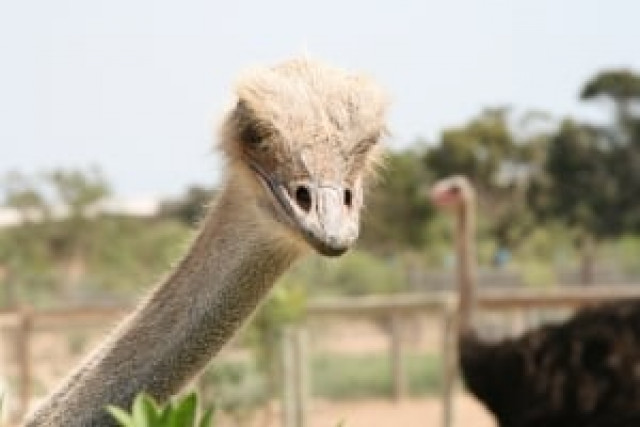‘Ostrich farming has the power to feed the world’
The business has a very profitable future: Sindh Board of Investment.

“Sindh Board of Investment (SBI) has taken pioneering steps in introducing ostrich farming in Sindh, which later on spread to other parts of the country,” said SBI Chairman Muhammad Zubair Motiwala at a meeting held at SBI’s office.
The demand and prices for ostrich leather and feathers have seldom been better globally and ostrich meat is also increasing sought after internationally for its health qualities.
Motiwala elaborated that ostrich, a flightless bird of African origin, was capable of living in all types of climates and temperatures but was especially at home in dry and hot climates such as those of rural Sindh. It has a long life span, resistance to disease and unparalleled food to weight gain ratio and yields high-quality red meat which is comparable in taste to mutton but is far superior in terms of almost zero fat content and very low cholesterol. “An average ostrich can give 80-100 kilogrammes of meat and its leather is considered of premium quality from which a number of leather products can be manufactured,” Motiwala said adding that feathers of the bird are another derivative which are used in electronics maintenance, fashion industry and other areas.

According to a study conducted by the Pakistan Ostrich Company, Pakistan was ranked in the bottom two among Ostrich producing countries. The study estimates that one hen can generate a revenue of Rs100,000, making it a very profitable opportunity.
Moreover, according to the research, Ostrich’s skin is considered to be the main revenue generator as it can be turned into one of the most luxurious of leathers. One value-added hide of the flightless bird can fetch up to 80% of total revenue earned from the animal as leather obtained of 14 square feet area sells for Rs16,000 in the international market. The global ostrich industry needs 20,000 hides annually.
Riazuddin, director general of the SBI said that despite the fact that Sindh had pioneered ostrich farming, other provinces especially Punjab had taken the lead and currently there were more than 6,000 birds compared to only a few hundred in Sindh.
He said that one main reason that deters livestock farmers from ostrich farming was that ostrich had not been designated as livestock in Pakistan thus depriving ostrich farmers of subsidies and support packages. He further said SBI has taken up the case of legal recognition of ostrich with Fisheries and Livestock Department and positive results were expected.
Tahir Latif, CEO of Pakistan Ostrich Company, the pioneering ostrich farmer, said that concessionary imports of chicks and machinery, access to credit, and dissemination of technical know-how about ostrich rearing to new investors are the dire needs of the hour.
He said that Pakistan Ostrich Company was working to set up a hatchery for indigenous breeding of birds and is also offering consultancy services as well as co-operative investment opportunities to new investors.
Published in The Express Tribune, December 22nd, 2012.



















COMMENTS
Comments are moderated and generally will be posted if they are on-topic and not abusive.
For more information, please see our Comments FAQ